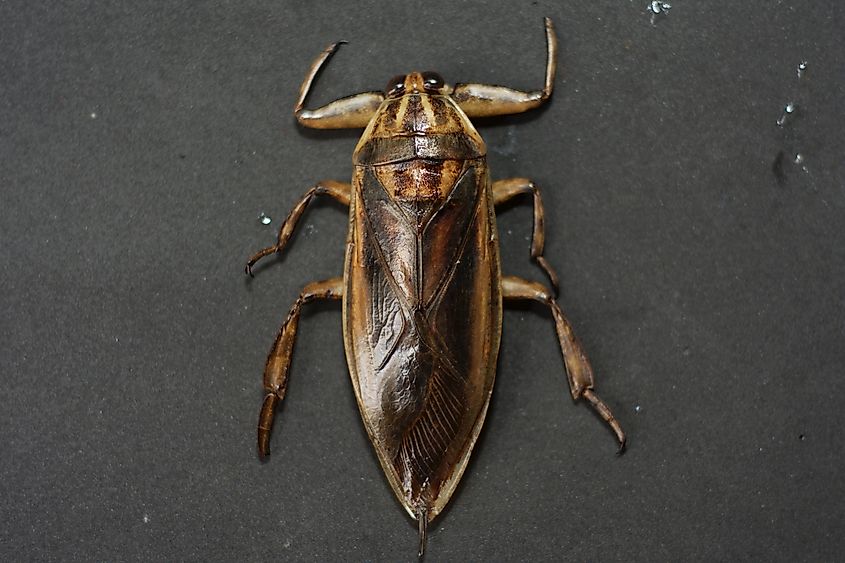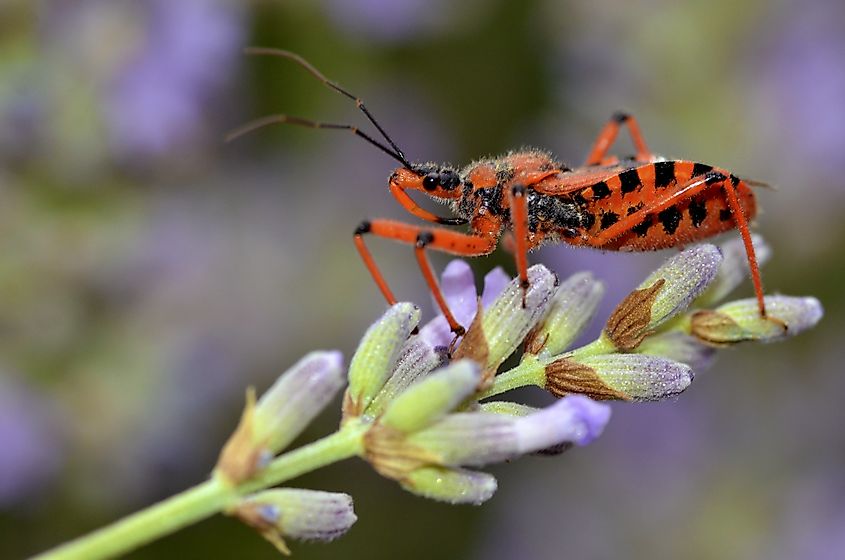
6 Most Dangerous Insects in North Dakota
North Dakota is not necessarily well-known for dangerous insects, but like pretty much any state in the US, there are still some critters in the environment that can pose a danger to humans. From its expansive prairie lands and banks along the Missouri River to more urban areas like Fargo and Bismark, let's take a look at six of the most dangerous insects to watch out for in the Peace Graden State.
Striped Blister Beetle

The striped blister beetle is an insect and agricultural pest that can be found in North Dakota, although it's less common there than other beetles. It's known for its unique yellow and black striped body and its defensive chemical secretion, called cantharidin. Contact with this toxin can cause blistering on human skin and is particularly harmful if ingested, posing a threat to livestock when the beetle contaminates hay. Measuring about one-third of an inch to two-thirds of an inch in length, these beetles are often found in fields, gardens, and pastures, where they like to feed on plants, including alfalfa, potatoes, and tomatoes. Although they can damage crops, their larvae are beneficial predators of grasshopper eggs, another insect that is known in rural North Dakota to damage important crops. Handling them directly is not advised due to their chemical defense. Farmers and gardeners alike are encouraged to monitor for infestations to minimize crop, human, and livestock risks.
Giant Water Bug

The giant water bug, sometimes also known appropriately as the "toe-biter," is a large aquatic insect found in many of North Dakota's ponds, lakes, and slow-moving streams. Measuring up to 4.5 inches long, it is known for its strong pincers and painful bite, which it uses to subdue prey such as fish, amphibians, and other insects. While not venomous to humans, its bite can cause significant pain and local swelling. These predatory insects are ambush predators, often lying motionless to capture passing prey in their habitats. Giant water bugs are also known for their unique parental behavior, with males carrying eggs on their backs until they hatch. Though encounters with humans are uncommon, care should be taken when wading in their habitats to avoid an accidental and painful bite to your foot.
Assassin Bug

Assassin bugs are a family of predatory insects found in North Dakota, known for their sharp, piercing mouthparts used to inject venom into prey. Measuring up to 40 millimeters, these insects prey on other bugs, including agricultural pests, making them beneficial to rural ecosystems that are common in this northern state. Assassin bugs often inhabit gardens, wooded areas, and under rocks or logs, blending expertly into their surroundings. Their bite, while not typically dangerous, can cause pain, redness, and swelling. It is advisable to avoid handling them and take precautions when gardening or exploring areas where they may reside. However, some species, such as the kissing bug, can bite humans, potentially transmitting Chagas disease, though this risk is exceedingly rare in this particular region.
Cow Killer

The cow killer, commonly known as the "velvet ant," is a visually striking insect. Despite its nickname, it is a solitary wasp rather than an ant. Rare to find in North Dakota, the females, covered in bright red-orange and black hair, are wingless and capable of delivering an extremely painful sting, earning them the reputation of being able to "kill a cow," though this is an exaggeration. Males, which have wings, are harmless as they lack stingers. Cow killers often search for nests of ground-nesting bees and wasps to parasitize. While not aggressive, they will sting if handled or threatened. Avoid direct contact and observe from a distance to stay safe, as you will probably not enjoy seeing if they live up to their nickname yourself!
Mosquito

Mosquitoes are common in North Dakota, especially during the warmer months, and are both a nuisance and a real public health concern. Over 40 species of this insect live in the borders of this state. These small, flying insects, found in pretty much any part of the world, belong to the family Culicidae and thrive near standing water, where they lay their eggs. Female mosquitoes feed on blood, using their needle-like mouthparts to pierce the skin. Their bites often result in itchy, swollen welts and, in some cases, can transmit diseases such as the West Nile virus, which is present in the Midwest. Because mosquitoes feed on blood, they are capable of transmitting several other dangerous diseases they could have picked up from other animals or humans. Preventing mosquito bites involves wearing protective clothing, using insect repellent, and eliminating standing water around homes to reduce breeding sites.
Dark Paper Wasp

The dark paper wasp, one of the most common insects found in North Dakota, is also known as the "northern paper wasp." It is notable for its elongated body and dark, metallic sheen. These wasps construct open-comb nests made from a paper-like material, typically under eaves, tree branches, or other sheltered areas. They play an important role in ecosystems by preying on caterpillars and other pests that could potentially damage the environment if their populations get out of control. While not a super aggressive species, dark paper wasps can and will sting if their nest is disturbed. Their stings are painful and may cause severe and possibly deadly allergic reactions in sensitive individuals. To avoid conflicts, remove nests early in the season when they are small, and consider using protective clothing or professional services for larger infestations.
Understanding Dangerous Insects in North Dakota
With this knowledge in mind, you can explore the vast wildernesses of North Dakota a little more safely. Although insects that can cause death for humans are very rare in this Midwestern state, it is still a good thing to know how to avoid a potential bite or venomous sting. Understanding how to identify the six most dangerous insects in North Dakota is a good start to keeping yourself and your family safe from painful bites and stings. Hopefully, you can also better understand the delicate environments these creatures live in and help either protect or avoid them in the future. As they say, knowledge is power, especially when it comes to looking after local wildlife of all forms.











